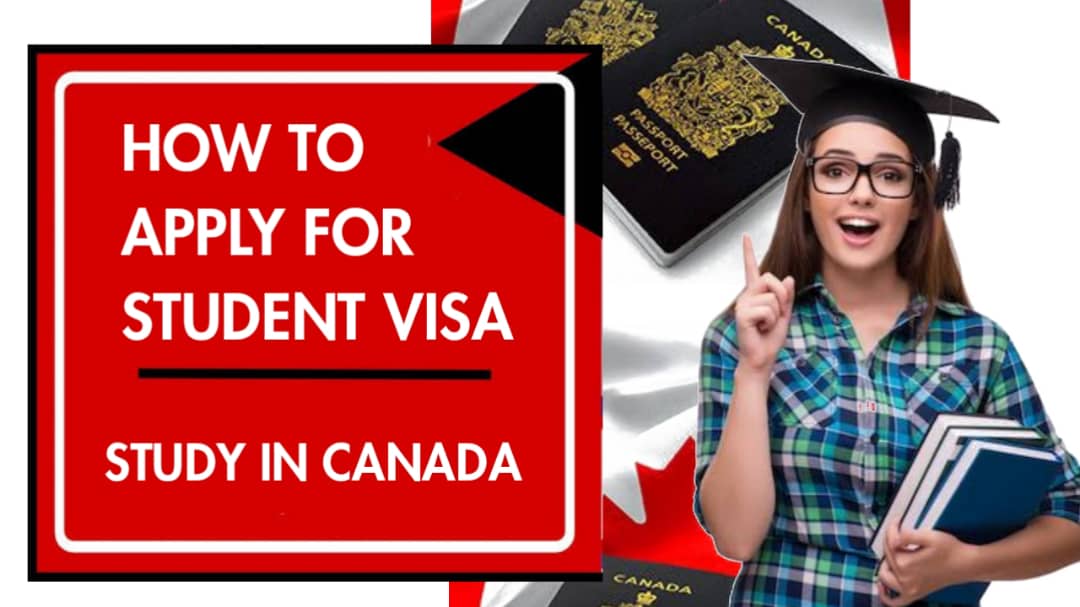How to apply for student visa and study in Canada 2023
What are the application process for a Canadian student visa? What are the advantages of studying in Canada? If you’re asking these questions, then you’re at the right page.
Canada’s educational sector is renowned for its high-quality universities and colleges, multicultural learning environment, diverse programs, research opportunities, and strong post-graduation employment prospects, attracting students from around the world. Additionally, Canada’s strong economy and safety make it an attractive destination for international students seeking a valuable educational and life experience.
Why choose Canada
While scholarships can be an additional benefit, Choosing Canada for study abroad offers numerous advantages, including:
Canada is renowned for its world-class universities and colleges, providing top-quality education and research opportunities.
Canada’s multicultural society ensures a welcoming and inclusive environment for international students.
It is one of the safest countries globally, with a low crime rate, providing a secure and comfortable living experience.
The Post-Graduation Work Permit Program (PGWPP) allows students to gain valuable work experience in Canada after graduation.
Canada consistently ranks high in terms of quality of life, healthcare, and social services.
Stunning natural landscapes, from mountains to lakes, offer recreational opportunities and breathtaking scenery.
Canada’s strong economy and job market make it an ideal place to pursue a successful career.
Minimum Acceptability requirements for students:
For undergraduates:
High School Diploma: Completion of a secondary school program or its equivalent.
English Language Proficiency: Proof of language proficiency through tests like IELTS or TOEFL.
Specific Program Requirements: Meeting any additional program-specific prerequisites.
Financial Support: Demonstrating the ability to cover tuition and living expenses.
Valid Passport: Ensuring a valid passport for the duration of study.
For graduates and post graduates:
Bachelor’s Degree: A completed bachelor’s degree from a recognized institution.
Language Proficiency: Proficiency in English or French through language tests like IELTS or TOEFL.
Letter of Acceptance: An acceptance letter from a Canadian institution.
Sufficient Funds: Proof of financial ability to cover tuition and living expenses.
Study Permit: A valid study permit to study in Canada.
Health Insurance: Some provinces may require health insurance coverage.
Other Specific Requirements: Depending on the program and institution, additional criteria may apply, such as standardized test scores (e.g., GRE/GMAT) and a statement of purpose.
Intake availability:
In Canada, there are typically three main intakes for international students:
1. Fall Intake: Starting in September, the fall intake is the most common and popular intake. It aligns with the academic year for most programs.
2. Winter Intake: Beginning in January, the winter intake is available for certain programs and provides a mid-academic-year start.
3. Summer Intake: Starting in May or July, the summer intake is less common and is available for a limited number of programs.
Students should choose the intake that best suits their academic and personal preferences, as well as the availability of their chosen program at their preferred Canadian institution. It’s important to check application deadlines and requirements specific to the intake and institution of interest.
Catergorization of Study Visa
In Canada, student visas can be categorized into two main processing streams: SDS (Student Direct Stream) and non-SDS. These streams affect the processing times and requirements for study permit applications.
1. SDS (Student Direct Stream):
SDS is an expedited processing option for study permit applications.
It is available to students from select countries, including India, China, the Philippines, Pakistan, Morocco, and Vietnam.
To apply through SDS, students must meet additional requirements, such as proving their language proficiency, providing a Guaranteed Investment Certificate (GIC) from a participating bank, and completing upfront medical examinations.
The processing time for SDS applications is typically faster compared to non-SDS applications.
2. Non-SDS (Regular Processing):
Non-SDS is the standard processing option for study permit applications.
It is available to students from all countries, including those not eligible for SDS.
Non-SDS applications have more flexible requirements and may not require upfront proof of financial support or language proficiency testing.
Processing times for non-SDS applications may vary and can take longer than SDS applications.
Additionally, it is important to determine whether you are eligible for SDS based on your country of residence and the specific requirements outlined by the Canadian immigration authorities. Both SDS and non-SDS pathways provide opportunities for international students to study in Canada, but SDS offers faster processing for eligible applicants.
General Student Visa Requirements
General student visa requirements include:
Acceptance offer from a recognized educational institution.
Adequate funds to cover tuition and living expenses.
A clean criminal record.
Passing a medical examination (if required).
Proving language proficiency (e.g. IELTS/TOEFL).
A valid passport.
Completing the visa application and paying the fee.
A study plan or statement of purpose.
Providing biometric data (fingerprints, photograph).
Specific to the country’s immigration policies.
Steps to Apply for Canadian Study Visa
1. First, secure admission to a Canadian DLI. You’ll need an official acceptance letter, which is crucial for your study permit application.
2. Ensure you meet the eligibility criteria for a Canadian study permit. Factors include your financial capacity, intent to return to your home country, and no criminal record.
3. Some provinces may require you to purchase a GIC, which demonstrates you have enough money to support your stay in Canada.
4. Prove your language proficiency in English or French by taking a recognized test like IELTS, TOEFL, or CELPIP. You need to meet the language requirements of the DLI.
5. Gather documents showing you have enough funds to cover tuition, living expenses, and return transportation.
6. Check if you need to provide biometrics and undergo a medical examination, depending on your home country and study duration.
7. Create an online account on the Canadian Immigration and Citizenship (CIC) website to apply for your study permit.
8. Complete the study permit application form, IMM 1294, accurately.
9. Pay the required application fee, which can vary based on your location.
10. Some countries require you to visit a VAC to submit biometrics, documents, and the application form.
11. Attend an interview if the Canadian authorities request one.
13. Once approved, you’ll receive a Port of Entry (POE) Letter of Introduction and a visa vignette in your passport.
14. Plan your travel to Canada, ensuring you arrive at the designated port of entry (POE) on or before the date indicated in your visa vignette. At the POE, you will undergo landing procedures, receive your study permit, and become a temporary resident of Canada.

